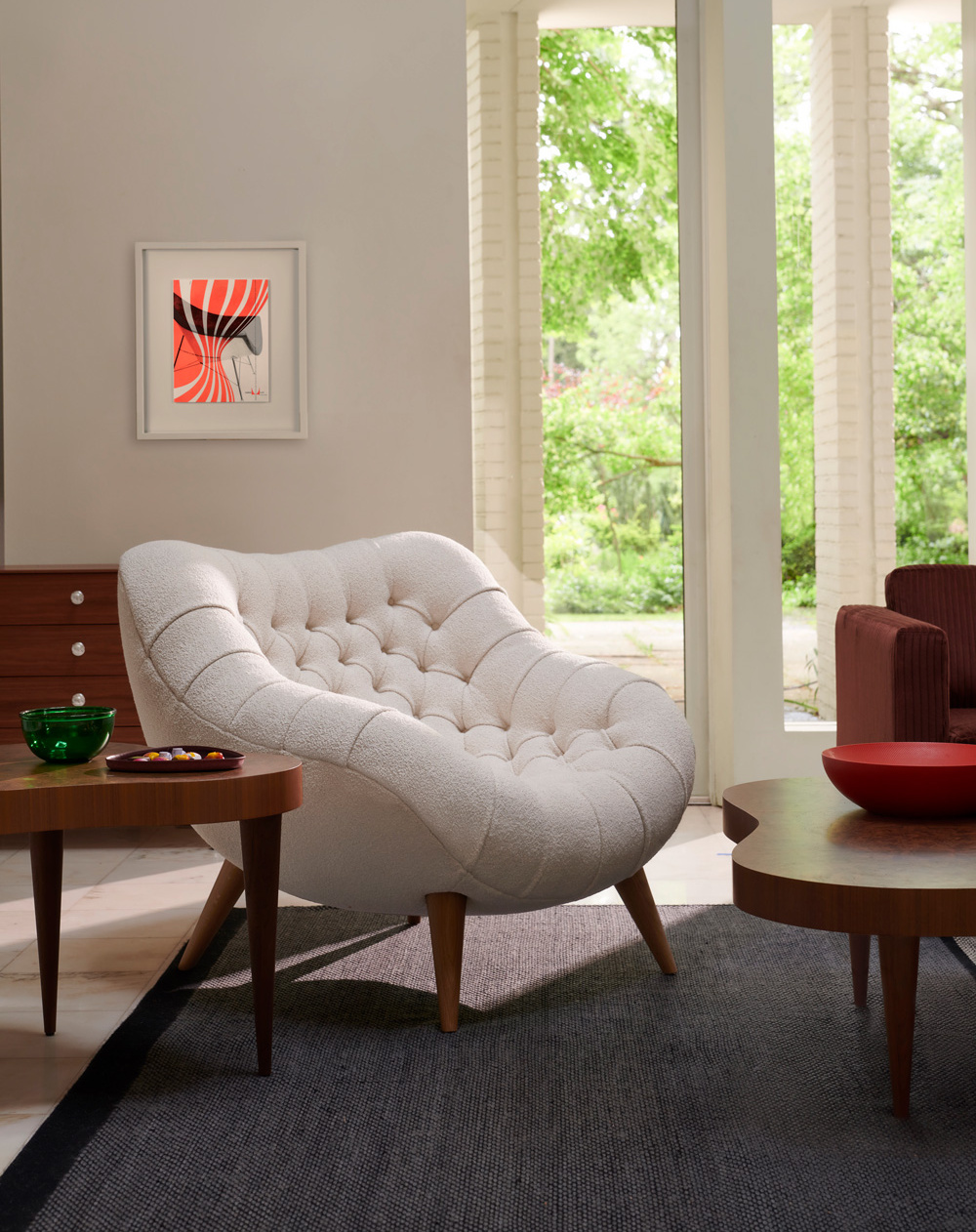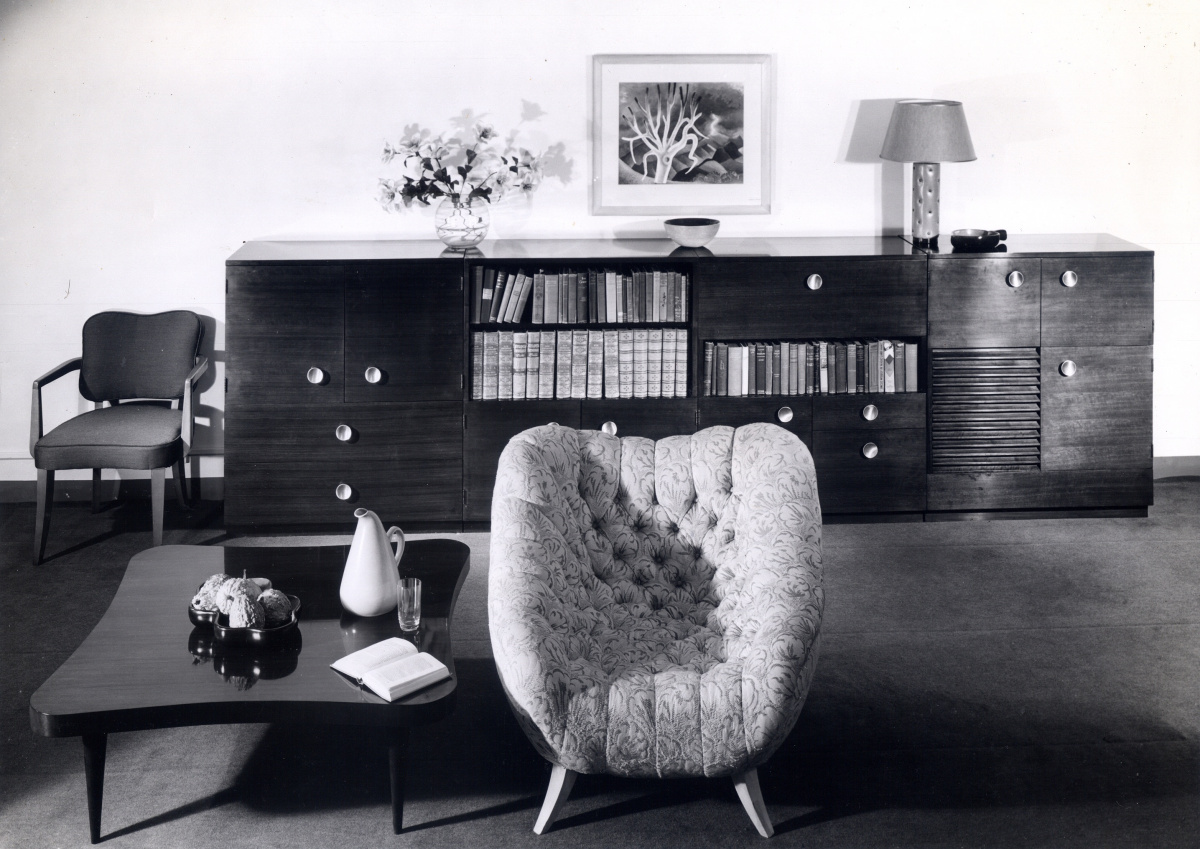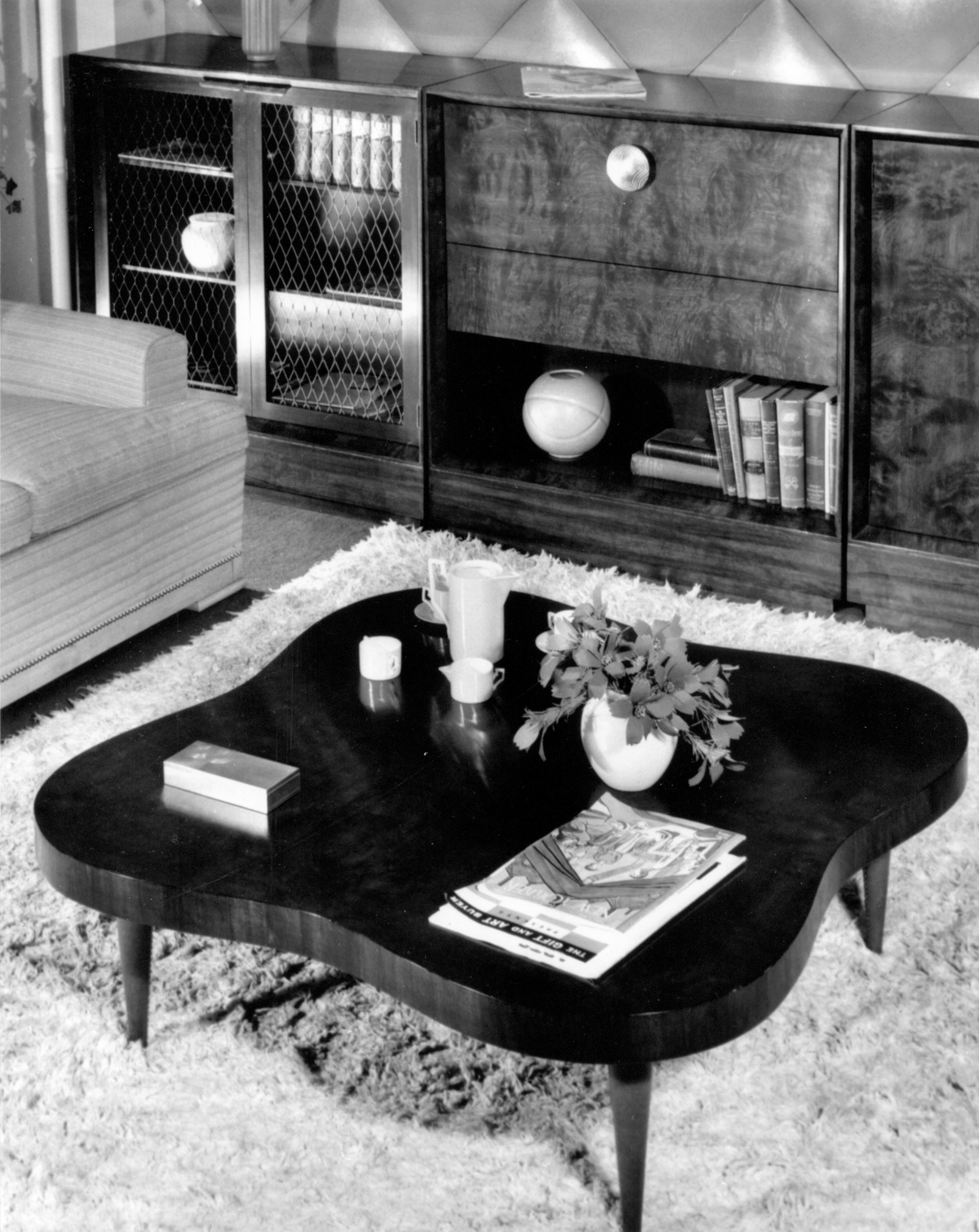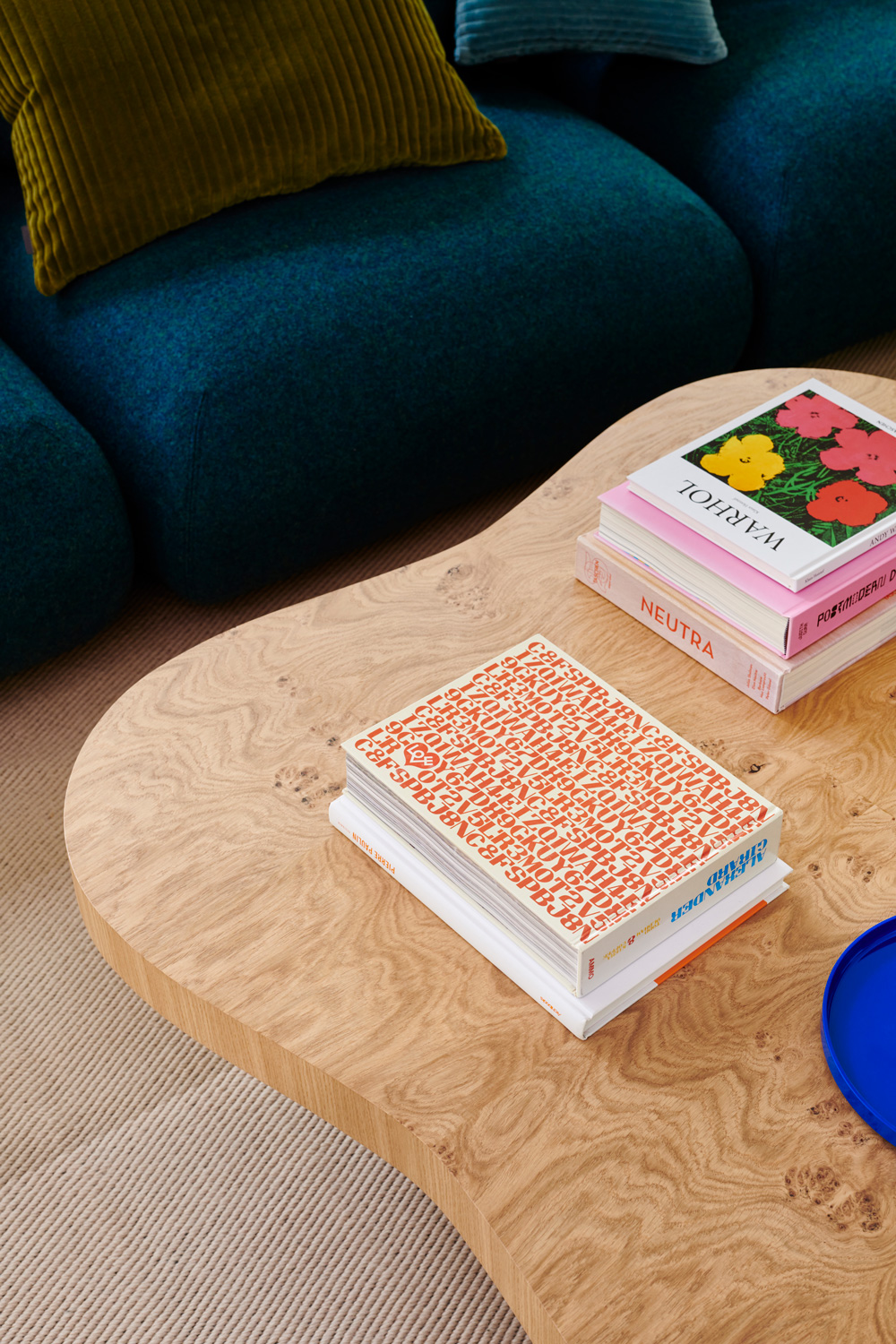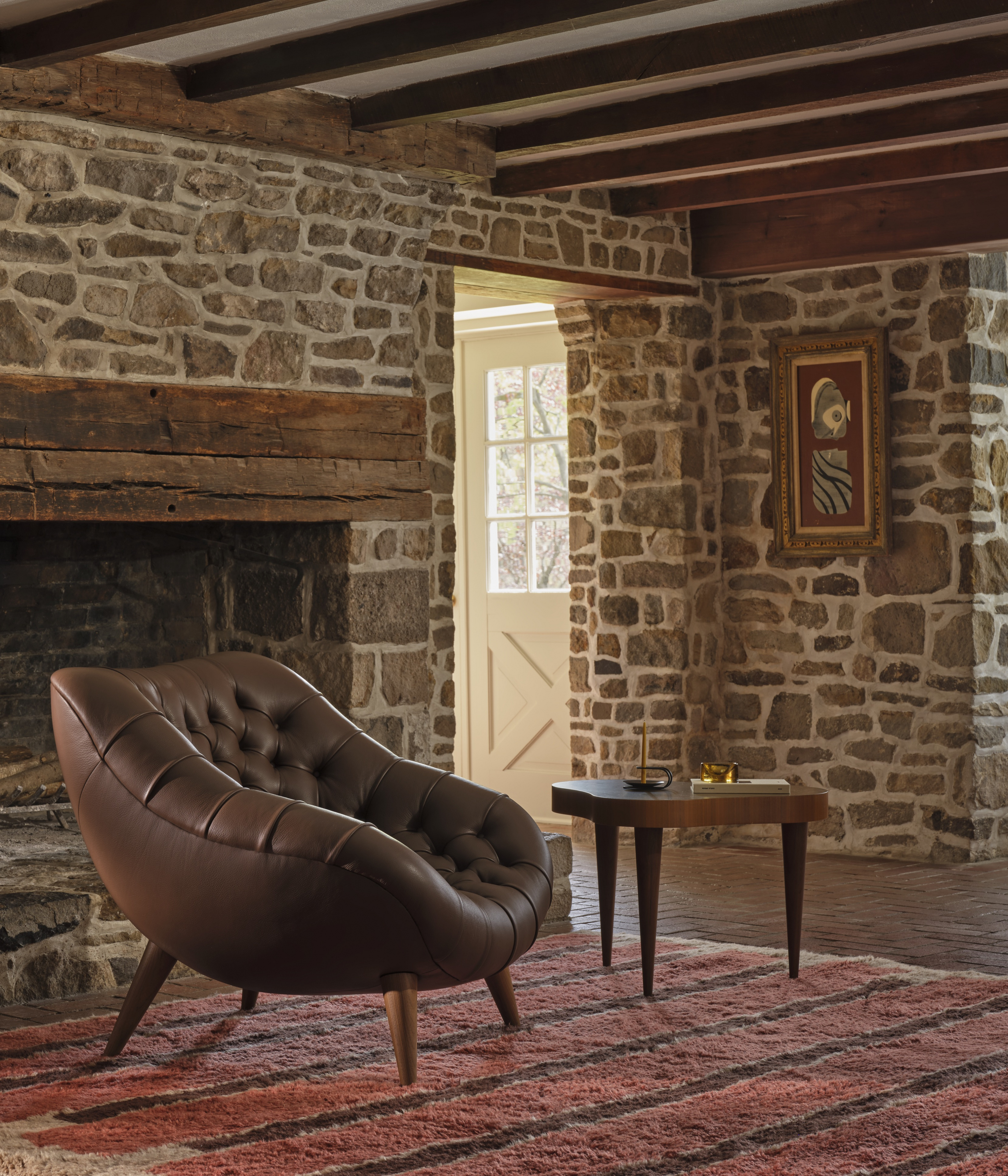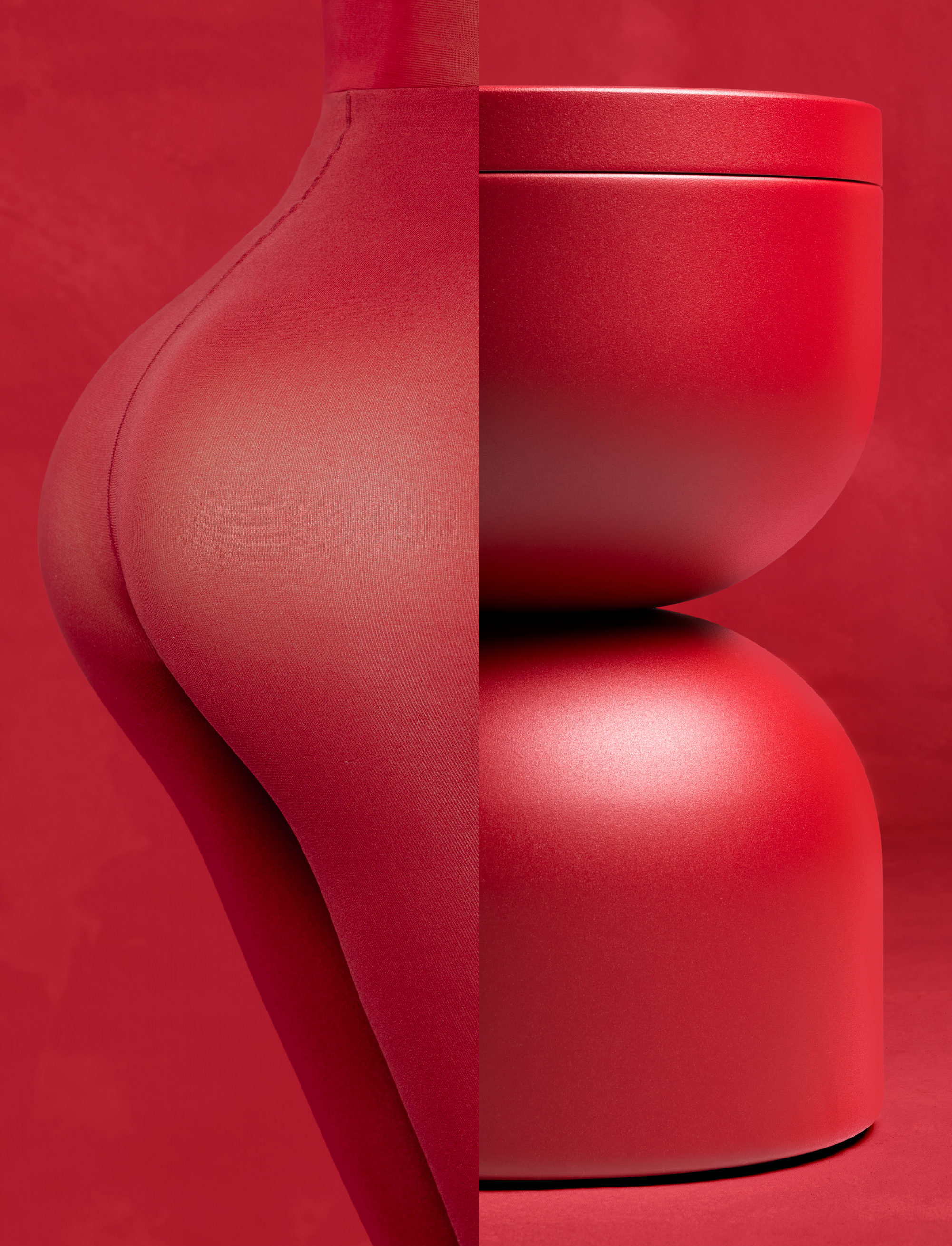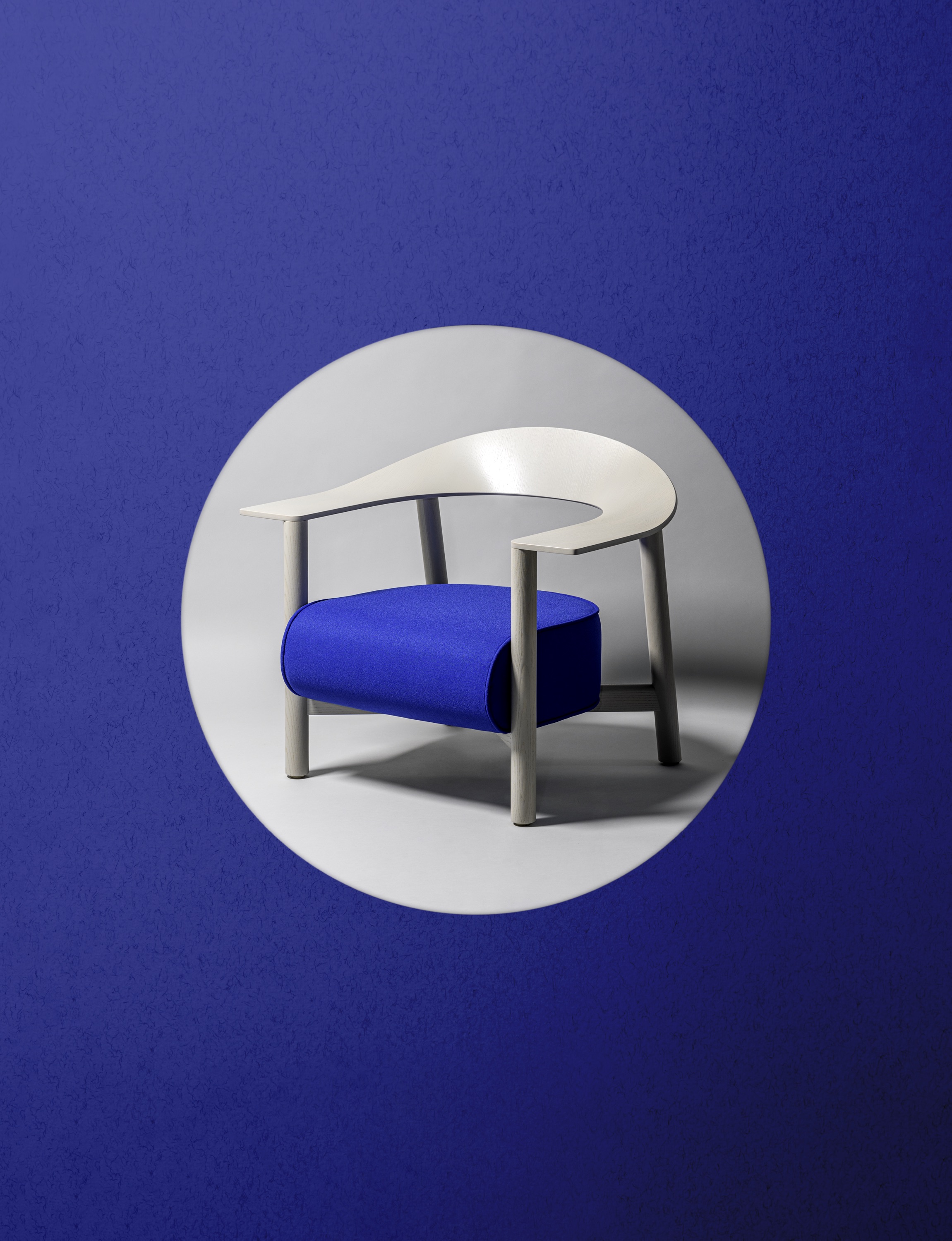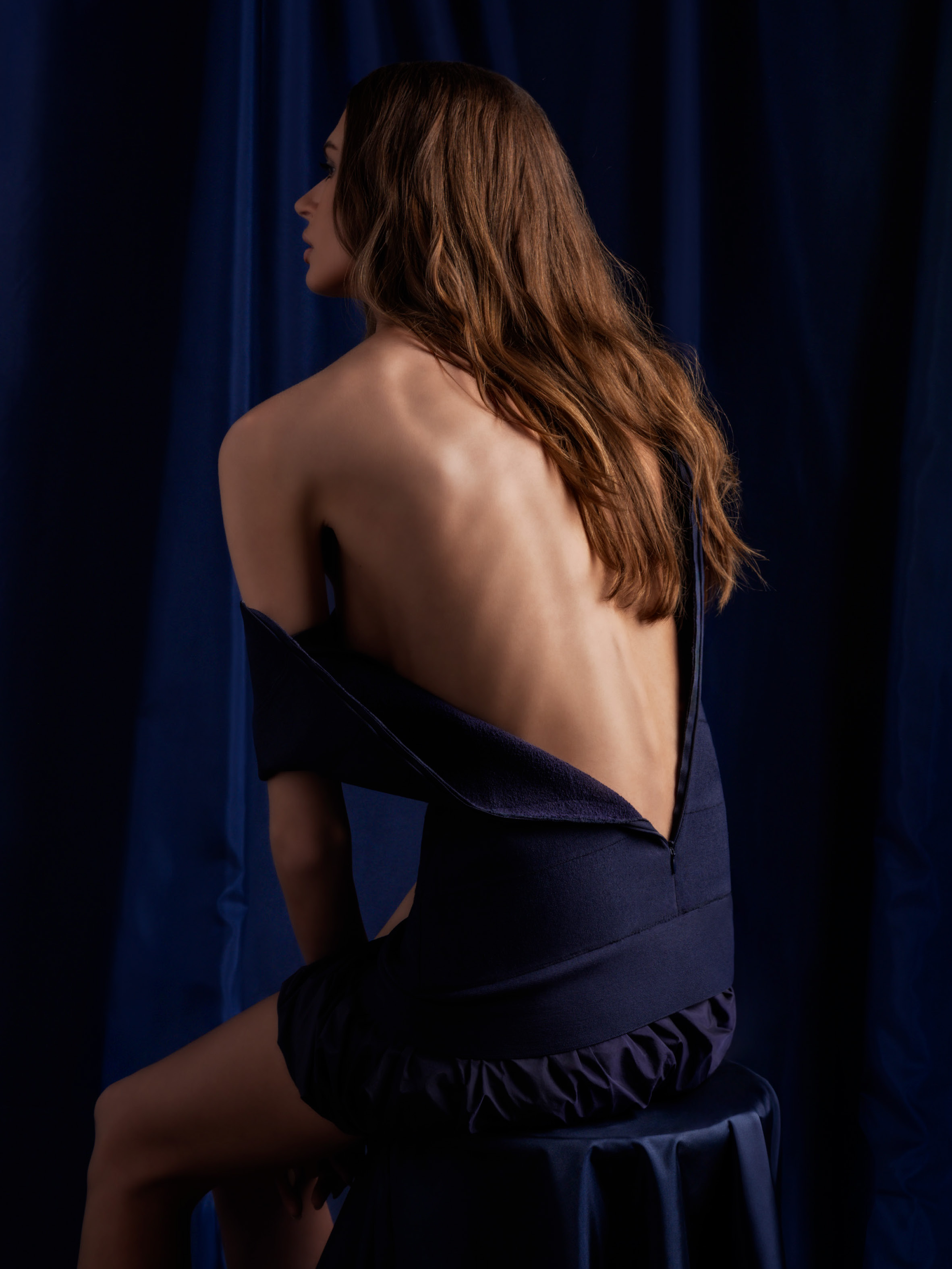Gilbert Rohde (1894-1944) was a furniture designer, Herman Miller’s first design director, and very, very ahead of his time.
In the 1930s Herman Miller, and most other residential furniture companies, were making reproductions of traditional ornate home furniture (think your great grandmother’s bedroom, or that cute vintage bed and breakfast you stayed at that one time in Vermont.)
Then Gilbert Rohde came along, whose ideas fundamentally changed American design. He “effectively introduced modern furniture design to the United States,” says Noah Schwarz, Vice President of Product Design for Herman Miller.
Gilbert was pushing boundaries. In 1938 he had created a molded Plexiglass and tubular steel chair which anticipated the trend of molded plastic furniture a decade before it became popular. Gilbert once said to Herman Miller’s founder, D.J. De Pree, “You’re not just making furniture anymore. You’re making a way of living—a lifestyle.”
- “The 1941 Rohde Easy chair is a spectacular and incredibly rare piece, with only a handful ever made,” says Noah Schwarz, Vice President of Product Design for Herman Miller Archives.
- Gilbert Rohde’s Rohde Paldao Coffee Table. Both designs, which debuted over 80 years prior, are being brought back into production today. Photos courtesy Herman Miller Archives.
Two of Gilbert’s most iconic designs, the Rohde Easy Chair and the Paldao Tables, which debuted over 80 years prior, are being brought back into production today. With the help of the Rohde family (his son, grandson and great grandchild were all involved) the designs have been masterfully updated and reintroduced by Herman Miller.
“The 1941 Rohde Easy chair is a spectacular and incredibly rare piece, with only a handful ever made. Through careful analysis of archival photography and measurements collected from a vintage original with the help of Wright Auction House founder, Richard Wright, we carefully reconstructed the chair,” says Noah. “After numerous rounds of prototyping and work with expert upholsterers, we were confident that we’d faithfully recreated the design.”
To understand how this long dormant and significant design returned to the market, I spoke with Amy Auscherman, Head of Archives and Brand Heritage and MillerKnoll.
Chris Force: How does the process of reintroducing products start? Are you constantly pitching products you feel should be reintroduced, or is it the other way around?
Amy Auscherman: It’s a back-and-forth between our team and the product development team. I work with Noah Schwarz, our VP of Design at Herman Miller. I’m a squeaky wheel in a good way—Gilbert Rohde was immediately interesting to me when I started my job, mostly in just that no one really knows his name in that pantheon of designers.
He came up alongside designers like Raymond Loewy and Walter Dorwin Teague. He was a founding member of what is now IDSA, Industrial Designers Society of America, and was super foundational in the profession. But he died early and was somewhat lost to history unless you were really digging into archives like those at Cooper Hewitt, where his papers are, along with some office papers that came to Herman Miller after he passed away.
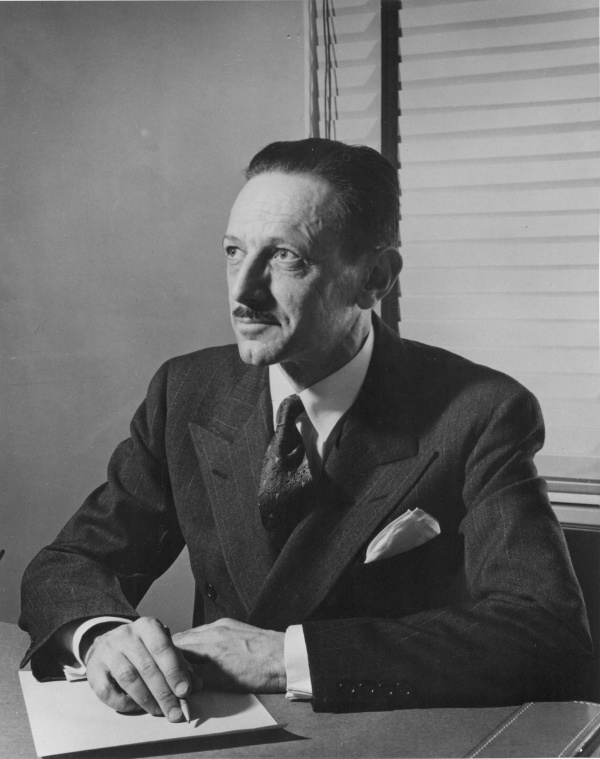
“When Rohde came in he was influenced by Bauhaus sensibilities—modularity, storage, and multifunctional furniture, like a side table that could also be a speaker or a couch with a desk on the back,” says Amy. Courtesy Herman Miller Archives
Rohde was someone that was always interesting to me. The Paldao pieces, especially the tables, feel very modern even today. When Rohde came in he was influenced by Bauhaus sensibilities—modularity, storage, and multifunctional furniture, like a side table that could also be a speaker or a couch with a desk on the back.
The Paldao stuff came later in his tenure and shows the influence of the biomorphic New York art scene and painters like Arshile Gorky, who he was collecting. They’re fun. Our product team suggested the tables, and we had some samples to work from. For the chair, we had to rely on photos because upholstered antiques degrade over time. We didn’t have a physical sample of the chair to work from.
We went back and forth with our product development team to get it just right. It was harrowing in a way, but we got it right. The chair turned out to be very comfortable, even though it looks a bit freaky in the best way. The sit of it is surprisingly comfy, so that’s cool too. The tables also feel just as relevant today and are a nice nod to Herman Miller’s legacy.
Was this something that Noah specifically brought up, like “I’m looking at this table and chair, what do you think?
Yes. Both of us do a lot of searching on auction sites. Rohde had been in the ether at Herman Miller, especially after we put out the book Herman Miller – A Way of Living (Phaidon) with the first chapter about him. It’s a chapter of design history that has been a bit opaque. Surfacing Rohde and his contributions naturally put them in the atmosphere. When Noah sent over his deck of proposals, I was excited to see Paldao included. I feel like we’ve been trying to manifest that for a while.
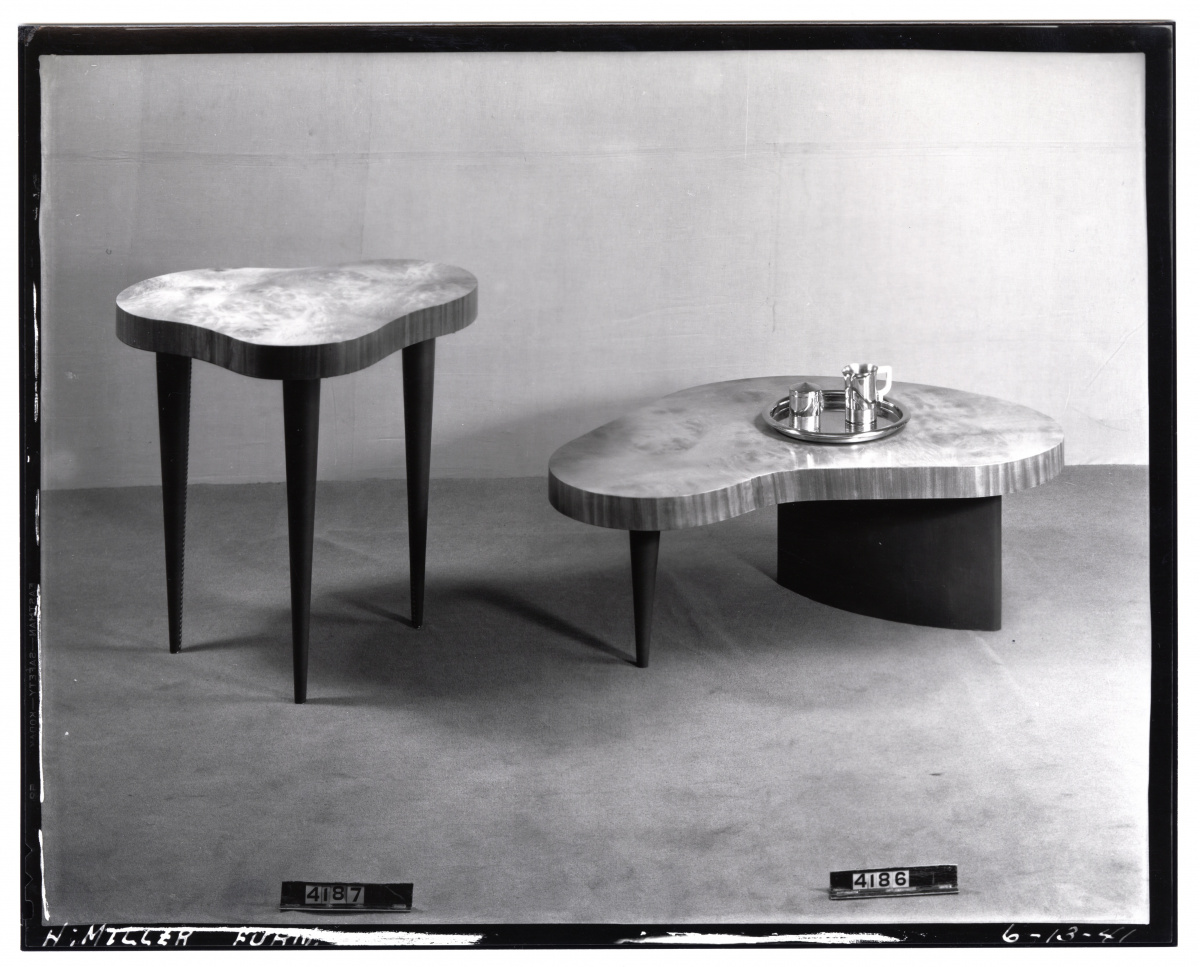
“Sometimes people just want that cool, blobby looking table—but I think it’s more fun to have a story behind something you buy and live with,” Amy says. Courtesy Herman Miller
I’ve done interviews about how new products come to market and am always surprised by the extremes. Sometimes there’s extensive planning with focus groups and market research, and other times it’s very spontaneous. Where does this process sit for you?
There are certainly business decisions behind something like an upholstered chair, but we have the luxury of reassessing our back catalog. I try to remind myself and my colleagues—when Rohde’s Paldao table came out, it looked like it was from outer space. Some designs that didn’t hit when they were launched might be more relevant now.
I think we’re still on that journey of becoming comfortable with different shapes or ideas of how furniture can function. We have an opportunity to tell an authored design story. It’s romantic. Sometimes people just want that cool, blobby looking table—but I think it’s more fun to have a story behind something you buy and live with. So while there are business decisions, we also tap into our legacy.
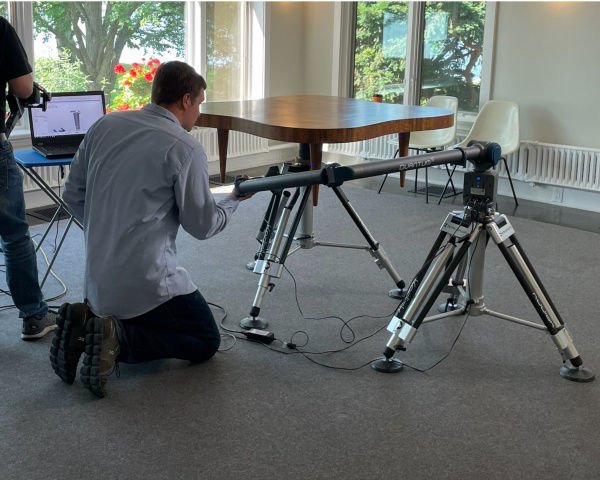
The Herman Miller team used old drawings, photographs, and 3D-scanned physical samples of Rohde’s pieces to help reconstitute them. Courtesy Herman Miller
Does the design of these back catalog pieces still naturally live with you, or could anyone else have brought this chair back to market?
We don’t own Rohde’s name and likeness, but we are the original producers of these designs. The Rohde and Herman Miller story is central to the history of modern design. We have the drawings, photographs, and physical samples of these pieces that we 3D scanned and worked with our product development team to reconstitute. We worked with Rohde’s grandson as well. I think spiritually, it wouldn’t be authentic if someone else made a design that was originally produced for Herman Miller.
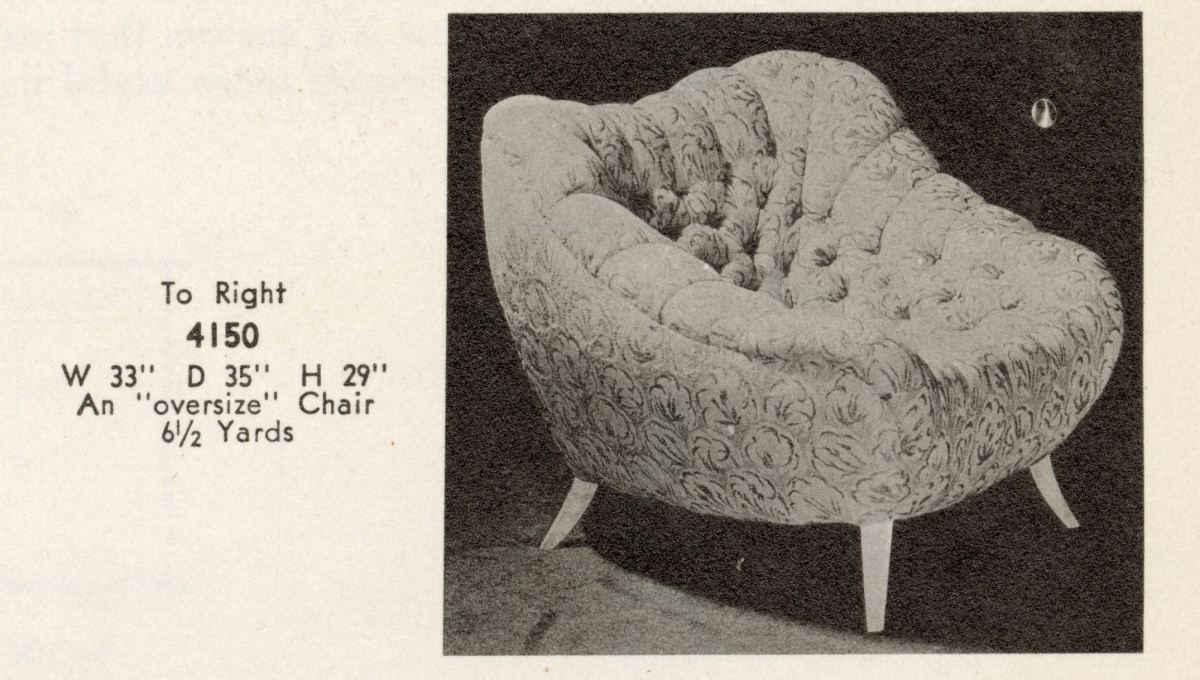
With some variations in the chair’s look over time, it took creative work on Herman Miller’s product development side to get it right. Courtesy Herman Miller Archives
These pictures of the original chair, you said you only had images and sketches to work from. Are these the only two pictures you had?
Those were the only two we found in the archive. One came up for auction over 10 years ago, which provided some visual reference. There were some variations in the chair’s look, so it also took some creative work on the product development side to get it right.
Back in the day, Herman Miller would make a few examples of a chair for showrooms, and some pieces wouldn’t stay in the line long, making them rare. On top of that upholstery degrades over time, making it hard to find pieces in good condition. We reached out to the auction house to contact the buyer but never heard back. So we had to rely on pictures, and it worked.
- “I love the burled book matching—I think it’s a really nice aesthetic that conveniently feels on-trend now,” Amy says.
- Rohde Easy Chair and Paldao table shown here with the Brick Wool Moroccan Rug from Beni Rugs. Photo courtesy Design Within Reach.
Even with just these two pictures, there are differences. What design changes did you have to make when updating this for the market?
The original Rohde tables had leatherette and upholstery nails on the legs, which might have been trendy in 1940 but feels dated today. Removing the pleather wrappings updates the design while keeping the beautifully shaped legs. Some wood options Rohde used for Paldao also aren’t available now. He was really into using exotic species of woods, and some don’t exist anymore. We updated those specs for today’s world and what we have access to.
The veneer work was very precise. I love the burled book matching—I think it’s a really nice aesthetic that conveniently feels on-trend now. I saw an article about how burled wood is back, so the timing is perfect. I personally love seeing the materiality of the wood, so it’s cool to showcase that effect on such a large surface.
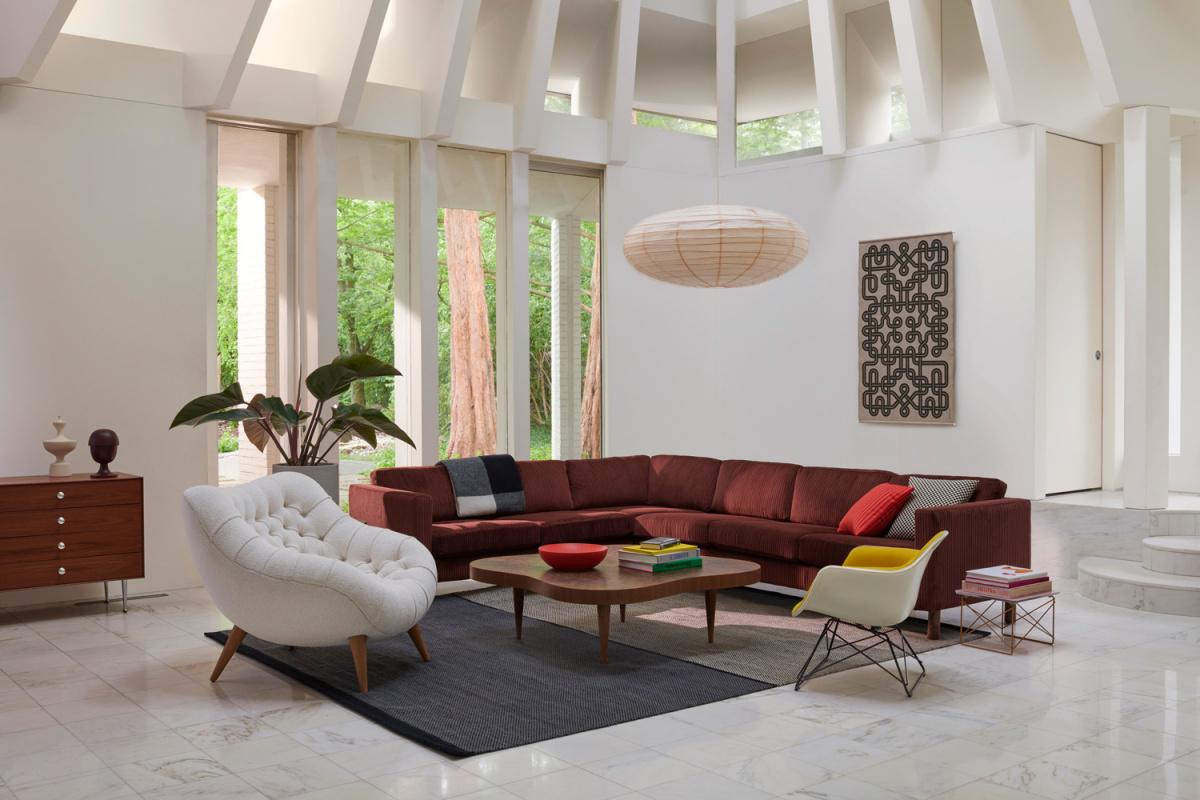
After numerous rounds of prototyping and work with expert upholsterers, the team is confident that they’ve faithfully recreated Rohde’s designs. Courtesy Herman Miller
Does he have other work that you’re considering reintroducing?
There’s a lot more work. There are certainly some pieces I’m a personal fan of that I think would play well today. It’s a lot of modular storage, so it’s fun to come out with these more sculptural pieces.
Do you spend a lot of time on auction sites, searching for additions to your archives?
Yes, both personally and professionally. Since COVID the market has become more competitive, which sharpens or hones our tastes. The secondary market is hotter than ever, especially for names like Eames. Rohde pieces are becoming more sought after now which is good for sellers.
Besides your book, has anything else been written about Rohde?
There’s a monograph by a scholar named Phyllis Ross. It’s the definitive Rohde book published by Yale over a decade ago. You can still find it. It’s worth a read.
